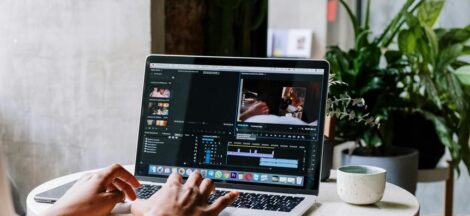Are you tired of endlessly scrolling through low-quality images that just don’t cut it? Are you in search of the ultimate visual experience that will leave you breathless every time? Look no further! In this post, we bring to you the ultimate guide on how to find the best 5120x1440p 329 material images. Get ready for a feast for your eyes as we take you through everything from where to look for these stunning images, what to consider when choosing them, and even some tips and tricks on how to make them look their best. So buckle up and get ready for an unforgettable ride into the world of ultra-high definition visuals!
What is a 5120×1440 pixel resolution?
A 5120×1440 pixel resolution is the highest resolution you can achieve with a standard display. It’s also the most common resolution used in monitors, laptop screens, and other displays.
5120×1440 is a good resolution for general use because it offers a good balance of detail and screen size. You can still see details while browsing web pages, watching videos, or reading text.
Most modern laptops and monitors support resolutions up to 5120×1440 pixels. However, not all websites are designed to be viewed at this high of a resolution. If you want to view a high-resolution image on your laptop or monitor, you’ll need to download the image to your computer first.
Why are these resolutions so important?
The resolutions being made this year are incredibly important. Not only do they affect the individual, but they also have a tremendous impact on society as a whole. Here are some reasons why resolutions are so important:
- They set a goal for the year and help to motivate individuals.
- They improve self-confidence and self-esteem.
- They can lead to physical health improvements such as losing weight or quitting smoking.
- They create a better work/life balance by reducing stress levels and improving productivity at work.
How to find the best material images for your project
There are a few key things you need to keep in mind when searching for material images for your project. First, it’s important to consider the purpose of the images. Some images may be necessary for UI elements or diagrams, while others may be more appropriate for showcasing data or visuals. Second, you’ll want to make sure the images are high-quality and will look good on your project’s finalized website or presentation. Finally, you’ll want to consider licensing options and whether you’ll need the images cropped or resized.
To get started, here are a few tips on how to find the best material images:
- Explore online resources and search engines. There are many online resources that can help you find high-quality material images for your project, including Google Images and Bing Images. You can also explore Pinterest boards and other social media sites for potential sources of image inspiration.
- Check out licensed sources. Some licensors offer free rights licenses for their materials so that you can use them without having to pay an upfront fee. Additionally, some licensors offer royalty-free rights licenses for your use so that you don’t have to pay any additional fees up front.
- Consider using stock photo services and libraries. Many stock photo services offer a wide range of high-quality images that can be used in your project without having to purchase any rights or license them yourself.
What are some of the most common resolutions for material images?
There are a few popular resolutions for material images that people use, such as 800×600, 1024×768, 1280×1024, and 1600×1200. It really depends on what you’re looking to achieve with your images and how much space you have. Some people also like to use 1920×1080 or even 2560×1440, but those are definitely going to take up more space than the other resolutions. Ultimately, it’s up to you and what looks good to you.
How do you know which resolution to choose for your project?
There is no hard and fast answer to this question, as the best resolution for any project will depend on a number of factors specific to that project. However, some general tips on choosing resolutions can be useful in making your choice.
The first step is to determine the scale of your image. If your image is going to be used on a website or printed out, you’ll want to use a higher resolution than if it’s just going to be used internally within a computer. Images that are used externally will also be larger in file size, so you’ll want to make sure your server can handle the load.
Another factor to consider when choosing a resolution is the aspect ratio of your image. Most websites and printing services prefer images with an aspect ratio of either 16:9 or 4:3; however, many computers still have software designed for older formats like 16:10 or 3:2. Make sure you choose a resolution that will fit properly into the dimensions of your final product.
Finally, it’s important to remember that pixels are not the only measure of an image’s quality. Sometimes less pixel- intensive files look better due to their smoother edges and less jaggedness. If you’re not sure which resolution will look best, experiment with different ones until you find one that looks good in all situations.
Conclusion
There’s no doubt that 5120x1440p material images are becoming increasingly popular among tech enthusiasts and content creators alike. While the resolution may be high enough for most applications, there are a few key factors to consider when selecting the right material image format for your project. In this guide, we’ll take a look at five of the most popular formats and discuss their pros and cons. Hopefully this will help you make an informed decision about which one is best for your next project!





 Why the 5120x1440p 329 Disney Monitor is a Must-Have for Gamers and Content Creators
Why the 5120x1440p 329 Disney Monitor is a Must-Have for Gamers and Content Creators